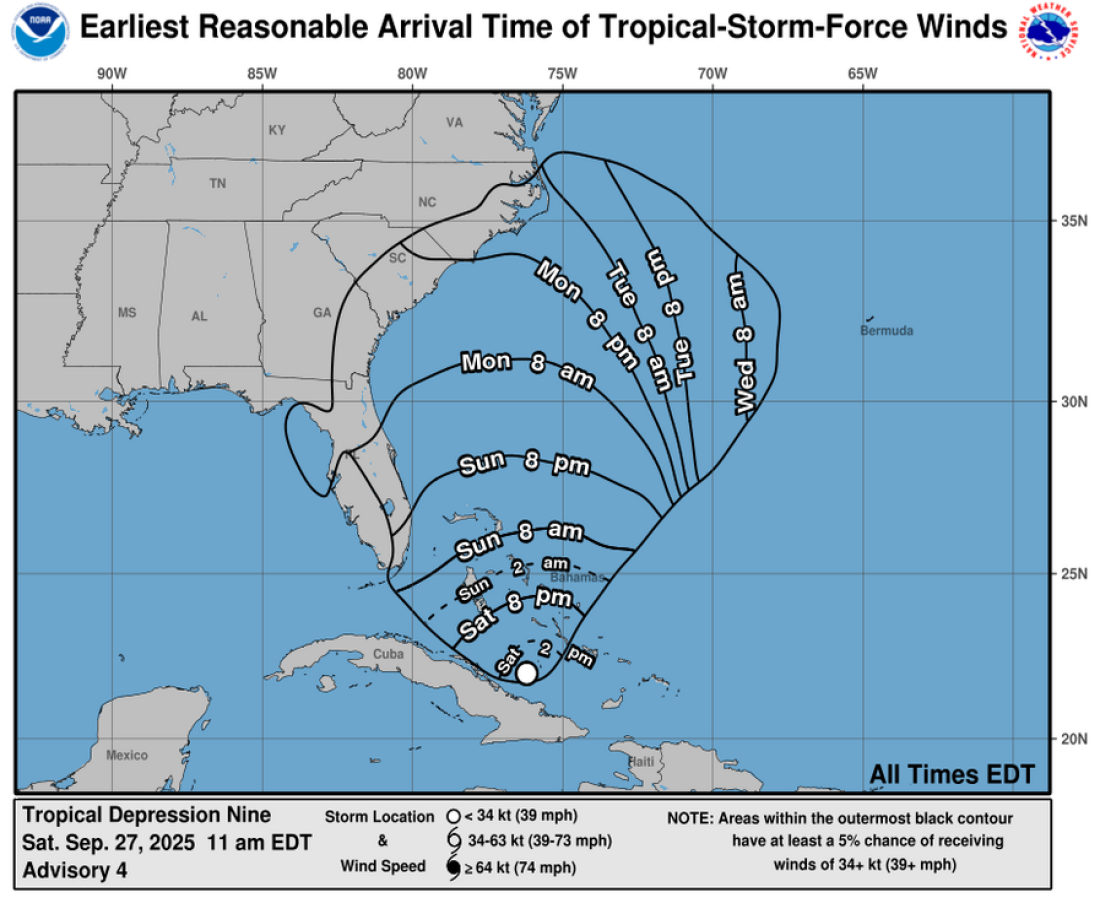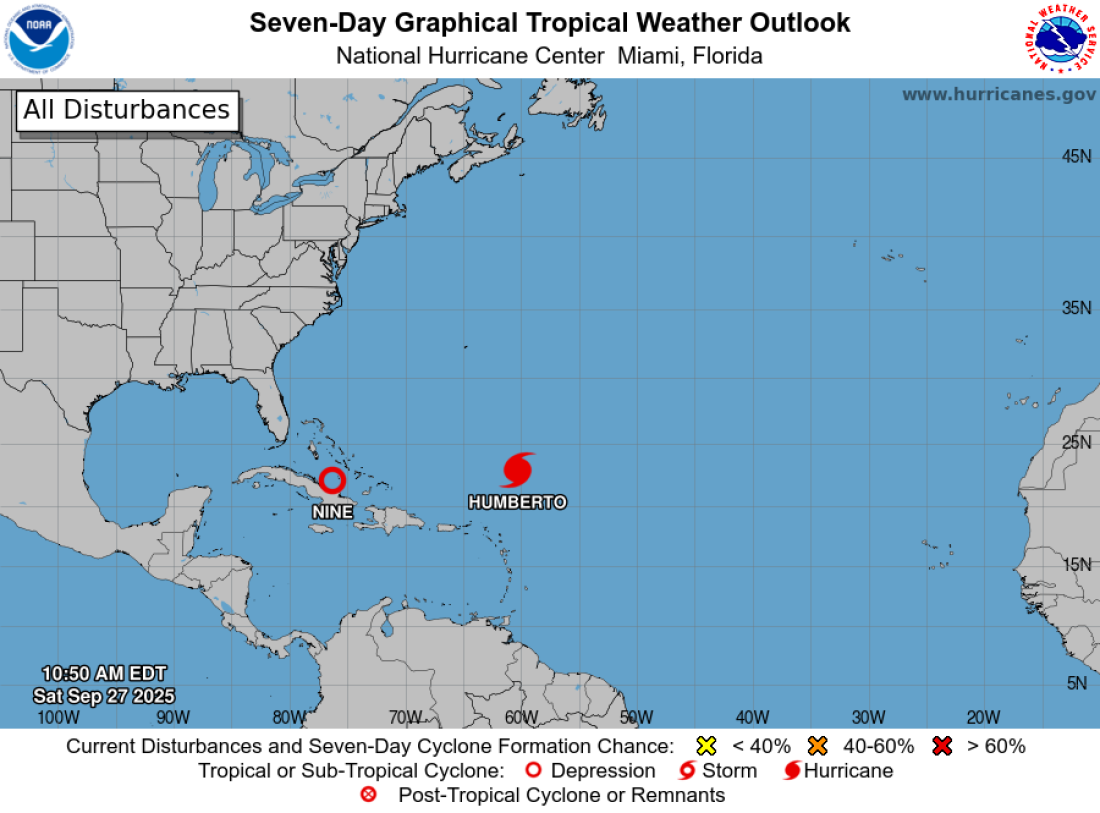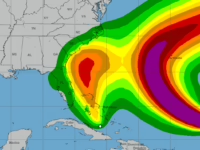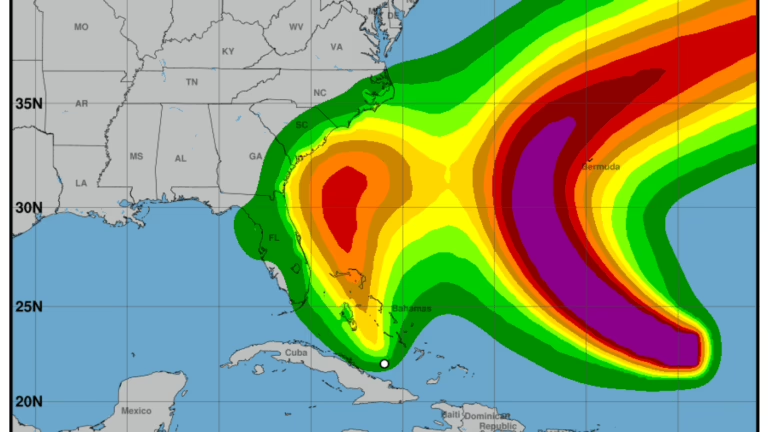Forecast map illustrating potential hurricane-force winds.
National Hurricane Center
hide caption
toggle caption
National Hurricane Center
The southeastern region of the United States is once again preparing for the possible arrival of a tropical storm, just a year after Hurricane Helene caused widespread destruction and loss of life across the area.
In anticipation of Tropical Depression 9, South Carolina Governor Henry McMaster has declared a state of emergency, as the system is forecasted to make landfall early next week.
“Although the exact timing, speed, and strength of the storm remain uncertain, it is clear that South Carolina will face strong winds, heavy rain, and flooding statewide,” McMaster stated on Friday.
“We have experienced similar situations before. Now is the critical moment to monitor official weather updates closely and begin taking necessary precautions,” he added.
Currently situated over parts of the Caribbean, the National Hurricane Center (NHC) reports that the storm is expected to impact eastern Cuba, Jamaica, the Bahamas, and the island of Hispaniola-which includes both the Dominican Republic and Haiti-throughout the weekend as it gains strength and develops into a tropical storm.

Timeline graphic showing when the storm is expected to affect the southeastern U.S.
National Hurricane Center
hide caption
toggle caption
National Hurricane Center
The NHC cautions that the storm could intensify significantly before reaching the U.S. coastline.
“Heavy rainfall poses a serious risk early next week, stretching from coastal Georgia through the Carolinas and into the southern Mid-Atlantic states, potentially triggering flash floods, urban flooding, and river overflow,” the center noted in its Saturday morning briefing.
They also indicated the storm might approach the southeastern U.S. with hurricane-level strength, though pinpointing the exact landfall location and severity remains premature.
So far, this Atlantic hurricane season has spared the Southeast from major impacts.
However, the area has endured multiple harsh hurricane seasons in recent years, including last year’s Hurricane Helene, which was the second major hurricane of that season and devastated numerous coastal communities.
Meanwhile, Hurricanes Gabrielle and Humberto have formed over the Atlantic but currently do not pose a threat to the U.S. mainland.

Hurricane Humberto is not currently expected to impact the United States.
National Hurricane Center
hide caption
toggle caption
National Hurricane Center
Over recent decades, hurricanes have grown in intensity and frequency, a trend linked to climate change. Rising sea surface temperatures fuel more powerful storms, which can lead to increased flooding, greater destruction of infrastructure, and higher risks to human life.
The catastrophic impact of Hurricane Katrina in 2005, which devastated New Orleans and surrounding Gulf Coast areas, spurred efforts to deepen scientific understanding of hurricanes and improve disaster preparedness and response strategies nationwide.
























